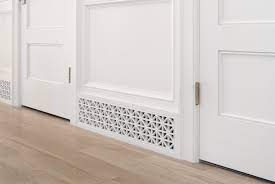Covering a vent with a bed can be a common practice for many people who want to redirect airflow or block unwanted drafts. However, some people wonder if it’s bad to cover a vent with a bed and if it can cause any problems. In this article, we will discuss the factors to consider when determining if covering a vent with a bed is bad and how to determine if it’s right for you.
Airflow and ventilation
One of the most important factors to consider when covering a vent with a bed is the airflow and ventilation in your home. Covering a vent can block airflow and reduce the efficiency of your HVAC system, leading to higher energy bills and reduced indoor air quality. If the vent is completely covered, it can also cause pressure imbalances, which can cause air leaks and other problems.
To determine if it’s bad to cover a vent with a bed. You should assess the airflow and ventilation in your home. If you have sufficient airflow and ventilation in your home, covering a vent with a bed may not be a big issue. However, if you have poor ventilation or airflow in your home, covering a vent with a bed can make the situation worse.
Bed size and placement
Another factor to consider when determining if it’s bad to cover a vent with a bed is the size and placement of the bed. If the bed is too large, it can completely cover the vent and block airflow. This can cause the air in your home to become stale and musty. Leading to health issues such as allergies and respiratory problems.
It’s also important to consider the placement of the bed. If the bed is placed directly over the vent, it can block the airflow and cause pressure imbalances. This can lead to hot and cold spots in your home, as well as other comfort issues.
Temperature and humidity
The temperature and humidity in your home can also be affected by covering a vent with a bed. If the vent is completely covered. It can cause the air in your home to become stagnant and lead to higher humidity levels. This can cause mold and mildew growth, as well as other health issues.
If you live in a humid environment, covering a vent with a bed can exacerbate the problem and lead to mold growth. It’s important to maintain proper airflow and ventilation in your home to prevent these issues.
Energy efficiency
Another consideration when determining if it’s bad to cover a vent with a bed is energy efficiency. Covering a vent can reduce the efficiency of your HVAC system and cause your energy bills to increase. This is because your HVAC system has to work harder to maintain. The desired temperature in your home when the airflow is blocked.
To maintain energy efficiency in your home, it’s important to ensure that all vents are unobstructed and the airflow is not blocked by furniture or other objects.
Personal comfort
Ultimately, personal comfort is the most important factor when determining if it’s bad to cover a vent with a bed. If you’re comfortable and don’t notice any adverse effects from covering the vent, then it may not be an issue for you.
However, if you notice that the air in your home feels stale or musty, or if you experience health issues. Such as allergies or respiratory problems. It may be a sign that covering the vent with a bed is not right for you.
In conclusion, covering a vent with a bed can be a convenient way to redirect airflow or block unwanted drafts. However, it’s important to consider the factors discussed above when determining if it’s bad to cover a vent with a bed. By assessing the airflow and ventilation in your home, the size and placement of your bed. The temperature and humidity levels, and your personal comfort. You can determine if covering a vent with a bed is right for you.

